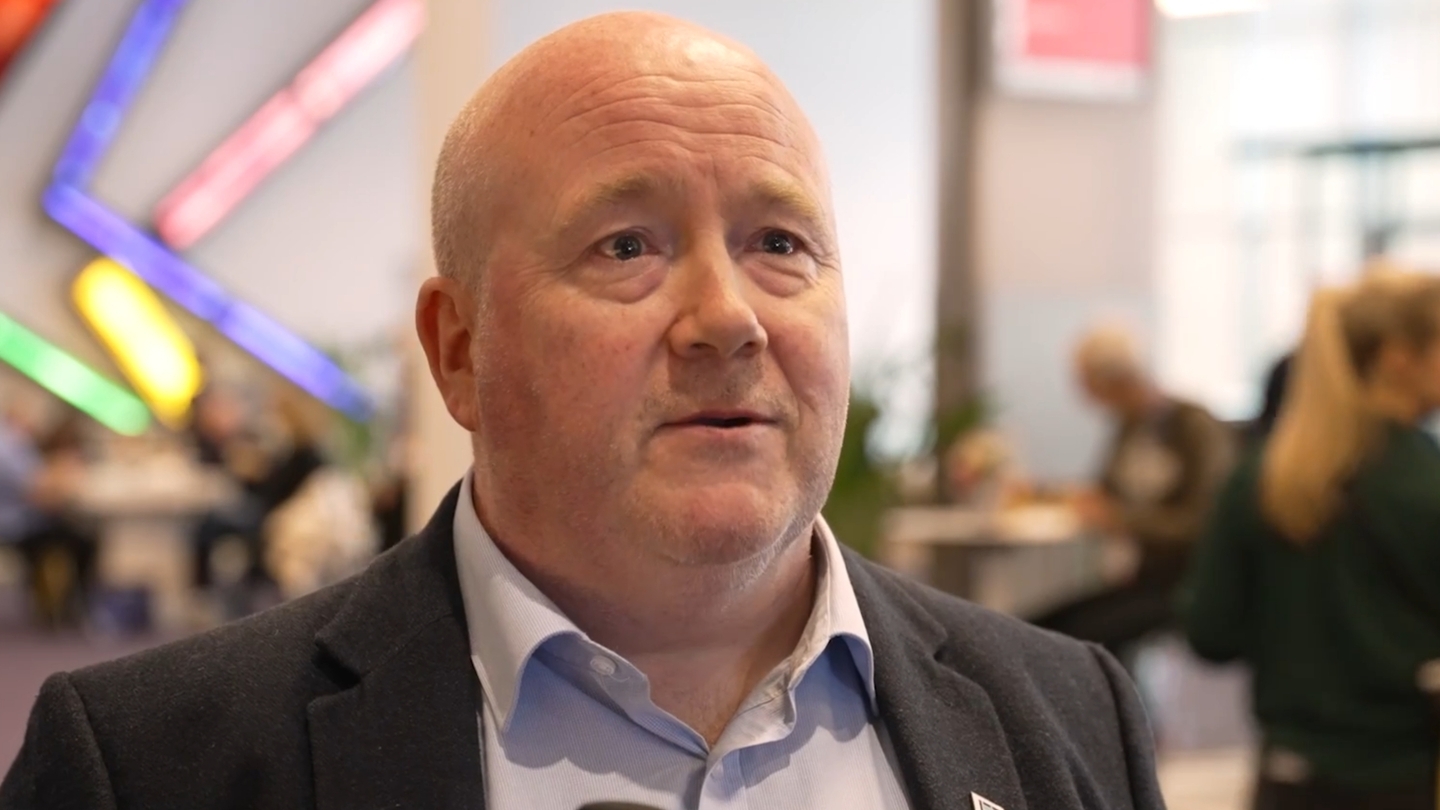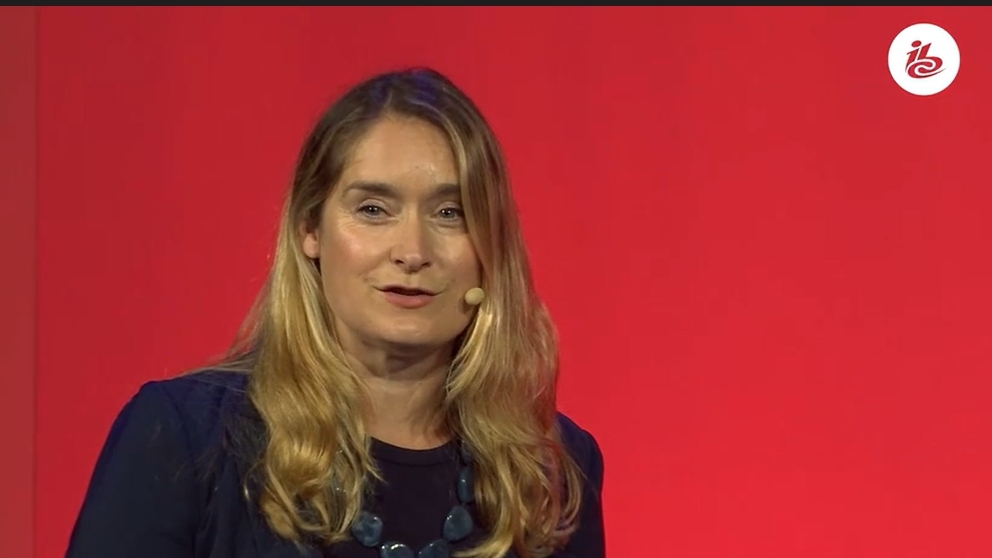spdt-1733520874.971-730PendingMaximum Storage Duration: PersistentType: HTML Local Storage
spdt-1733520875.173-694PendingMaximum Storage Duration: PersistentType: HTML Local Storage
spdt-1733520966.656-112PendingMaximum Storage Duration: PersistentType: HTML Local Storage
spdt-1733521163.232-405PendingMaximum Storage Duration: PersistentType: HTML Local Storage
spdt-1733521397.106-583PendingMaximum Storage Duration: PersistentType: HTML Local Storage
spdt-1733521397.326-435PendingMaximum Storage Duration: PersistentType: HTML Local Storage
spdt-1733521398.222-439PendingMaximum Storage Duration: PersistentType: HTML Local Storage
spdt-1733521399.067-279PendingMaximum Storage Duration: PersistentType: HTML Local Storage
spdt-1733521482.621-577PendingMaximum Storage Duration: PersistentType: HTML Local Storage
spdt-1733521483.289-788PendingMaximum Storage Duration: PersistentType: HTML Local Storage
spdt-1733521630.705-186PendingMaximum Storage Duration: PersistentType: HTML Local Storage
spdt-1733521630.706-243PendingMaximum Storage Duration: PersistentType: HTML Local Storage
spdt-1733521677.14-52PendingMaximum Storage Duration: PersistentType: HTML Local Storage
spdt-1733521819.524-116PendingMaximum Storage Duration: PersistentType: HTML Local Storage
spdt-1733521820.524-204PendingMaximum Storage Duration: PersistentType: HTML Local Storage
spdt-1733522020.191-316PendingMaximum Storage Duration: PersistentType: HTML Local Storage
spdt-1733522020.297-891PendingMaximum Storage Duration: PersistentType: HTML Local Storage
spdt-1733522020.462-798PendingMaximum Storage Duration: PersistentType: HTML Local Storage
spdt-1733522020.632-140PendingMaximum Storage Duration: PersistentType: HTML Local Storage
spdt-1733522021.592-819PendingMaximum Storage Duration: PersistentType: HTML Local Storage
spdt-1733522112.575-521PendingMaximum Storage Duration: PersistentType: HTML Local Storage
spdt-1733522162.727-99PendingMaximum Storage Duration: PersistentType: HTML Local Storage
spdt-1733522162.802-245PendingMaximum Storage Duration: PersistentType: HTML Local Storage
spdt-1733522163.322-335PendingMaximum Storage Duration: PersistentType: HTML Local Storage
spdt-1733522312.983-504PendingMaximum Storage Duration: PersistentType: HTML Local Storage
spdt-1733522313.069-793PendingMaximum Storage Duration: PersistentType: HTML Local Storage
spdt-1733522313.193-911PendingMaximum Storage Duration: PersistentType: HTML Local Storage
spdt-1733522650.509-910PendingMaximum Storage Duration: PersistentType: HTML Local Storage
spdt-1733522660.666-731PendingMaximum Storage Duration: PersistentType: HTML Local Storage
spdt-1733522689.145-598PendingMaximum Storage Duration: PersistentType: HTML Local Storage
spdt-1733522739.381-436PendingMaximum Storage Duration: PersistentType: HTML Local Storage
spdt-1733522739.491-770PendingMaximum Storage Duration: PersistentType: HTML Local Storage
spdt-1733522739.508-831PendingMaximum Storage Duration: PersistentType: HTML Local Storage
spdt-1733522782.998-921PendingMaximum Storage Duration: PersistentType: HTML Local Storage
spdt-1733522837.875-782PendingMaximum Storage Duration: PersistentType: HTML Local Storage
spdt-1733522914.951-104PendingMaximum Storage Duration: PersistentType: HTML Local Storage
spdt-1733523000.987-252PendingMaximum Storage Duration: PersistentType: HTML Local Storage
spdt-1733523000.99-947PendingMaximum Storage Duration: PersistentType: HTML Local Storage
spdt-1733523105.558-368PendingMaximum Storage Duration: PersistentType: HTML Local Storage
spdt-1733523272.516-566PendingMaximum Storage Duration: PersistentType: HTML Local Storage
spdt-1733523272.593-41PendingMaximum Storage Duration: PersistentType: HTML Local Storage
spdt-1733523272.658-272PendingMaximum Storage Duration: PersistentType: HTML Local Storage
spdt-1733523378.152-323PendingMaximum Storage Duration: PersistentType: HTML Local Storage
spdt-1733523378.948-69PendingMaximum Storage Duration: PersistentType: HTML Local Storage
spdt-1733523412.1-752PendingMaximum Storage Duration: PersistentType: HTML Local Storage
spdt-1733523474.701-650PendingMaximum Storage Duration: PersistentType: HTML Local Storage
spdt-1733523547.562-623PendingMaximum Storage Duration: PersistentType: HTML Local Storage
spdt-1733523547.684-896PendingMaximum Storage Duration: PersistentType: HTML Local Storage
spdt-1733523548.327-678PendingMaximum Storage Duration: PersistentType: HTML Local Storage
spdt-1733523652.422-84PendingMaximum Storage Duration: PersistentType: HTML Local Storage
spdt-1733523653.043-35PendingMaximum Storage Duration: PersistentType: HTML Local Storage
spdt-1733523653.578-411PendingMaximum Storage Duration: PersistentType: HTML Local Storage
spdt-1733523823.659-250PendingMaximum Storage Duration: PersistentType: HTML Local Storage
spdt-1733523882.626-110PendingMaximum Storage Duration: PersistentType: HTML Local Storage
spdt-1733523882.689-405PendingMaximum Storage Duration: PersistentType: HTML Local Storage
spdt-1733523883.107-672PendingMaximum Storage Duration: PersistentType: HTML Local Storage
spdt-1733523883.649-980PendingMaximum Storage Duration: PersistentType: HTML Local Storage
spdt-1733523992.922-256PendingMaximum Storage Duration: PersistentType: HTML Local Storage
spdt-1733523992.954-696PendingMaximum Storage Duration: PersistentType: HTML Local Storage
spdt-1733524088.386-677PendingMaximum Storage Duration: PersistentType: HTML Local Storage
spdt-1733524091.502-548PendingMaximum Storage Duration: PersistentType: HTML Local Storage
spdt-1733524100.358-356PendingMaximum Storage Duration: PersistentType: HTML Local Storage
spdt-1733524170.855-454PendingMaximum Storage Duration: PersistentType: HTML Local Storage
spdt-1733524170.908-309PendingMaximum Storage Duration: PersistentType: HTML Local Storage
spdt-1733524170.972-180PendingMaximum Storage Duration: PersistentType: HTML Local Storage
spdt-1733524172.396-648PendingMaximum Storage Duration: PersistentType: HTML Local Storage
spdt-1733524192.646-746PendingMaximum Storage Duration: PersistentType: HTML Local Storage
spdt-1733524206.294-45PendingMaximum Storage Duration: PersistentType: HTML Local Storage
spdt-1733524285.625-413PendingMaximum Storage Duration: PersistentType: HTML Local Storage
spdt-1733524285.672-583PendingMaximum Storage Duration: PersistentType: HTML Local Storage
spdt-1733524285.959-65PendingMaximum Storage Duration: PersistentType: HTML Local Storage
spdt-1733524285.984-893PendingMaximum Storage Duration: PersistentType: HTML Local Storage
spdt-1733524286.147-193PendingMaximum Storage Duration: PersistentType: HTML Local Storage
spdt-1733524294.004-815PendingMaximum Storage Duration: PersistentType: HTML Local Storage
spdt-1733524433.232-446PendingMaximum Storage Duration: PersistentType: HTML Local Storage
spdt-1733524433.234-564PendingMaximum Storage Duration: PersistentType: HTML Local Storage
spdt-1733524453.091-343PendingMaximum Storage Duration: PersistentType: HTML Local Storage
spdt-1733524453.092-209PendingMaximum Storage Duration: PersistentType: HTML Local Storage
spdt-1733524468.267-653PendingMaximum Storage Duration: PersistentType: HTML Local Storage
spdt-1733524468.26-782PendingMaximum Storage Duration: PersistentType: HTML Local Storage
spdt-1733524468.469-680PendingMaximum Storage Duration: PersistentType: HTML Local Storage
spdt-1733524469.3-168PendingMaximum Storage Duration: PersistentType: HTML Local Storage
spdt-1733524469.848-220PendingMaximum Storage Duration: PersistentType: HTML Local Storage
spdt-1733524472.762-166PendingMaximum Storage Duration: PersistentType: HTML Local Storage
spdt-1733524583.887-790PendingMaximum Storage Duration: PersistentType: HTML Local Storage
spdt-1733524631.171-1PendingMaximum Storage Duration: PersistentType: HTML Local Storage
spdt-1733524631.17-423PendingMaximum Storage Duration: PersistentType: HTML Local Storage
spdt-1733524711.095-774PendingMaximum Storage Duration: PersistentType: HTML Local Storage
spdt-1733524771.811-339PendingMaximum Storage Duration: PersistentType: HTML Local Storage
spdt-1733524771.825-196PendingMaximum Storage Duration: PersistentType: HTML Local Storage
spdt-1733524771.889-546PendingMaximum Storage Duration: PersistentType: HTML Local Storage
spdt-1733524886.114-602PendingMaximum Storage Duration: PersistentType: HTML Local Storage
spdt-1733524886.162-977PendingMaximum Storage Duration: PersistentType: HTML Local Storage
spdt-1733525083.972-965PendingMaximum Storage Duration: PersistentType: HTML Local Storage
spdt-1733525083.984-494PendingMaximum Storage Duration: PersistentType: HTML Local Storage
spdt-1733525084.075-295PendingMaximum Storage Duration: PersistentType: HTML Local Storage
spdt-1733525084.42-229PendingMaximum Storage Duration: PersistentType: HTML Local Storage
spdt-1733525084.755-303PendingMaximum Storage Duration: PersistentType: HTML Local Storage
spdt-1733525403.412-775PendingMaximum Storage Duration: PersistentType: HTML Local Storage
spdt-1733525425.596-899PendingMaximum Storage Duration: PersistentType: HTML Local Storage
spdt-1733525425.597-560PendingMaximum Storage Duration: PersistentType: HTML Local Storage
spdt-1733525469.011-602PendingMaximum Storage Duration: PersistentType: HTML Local Storage
spdt-1733525672.28-215PendingMaximum Storage Duration: PersistentType: HTML Local Storage
spdt-1733526126.663-953PendingMaximum Storage Duration: PersistentType: HTML Local Storage
spdt-1733526151.133-63PendingMaximum Storage Duration: PersistentType: HTML Local Storage
spdt-1733526326.887-187PendingMaximum Storage Duration: PersistentType: HTML Local Storage
spdt-1733526387.877-887PendingMaximum Storage Duration: PersistentType: HTML Local Storage
spdt-1733526457.44-971PendingMaximum Storage Duration: PersistentType: HTML Local Storage
spdt-1733526457.547-310PendingMaximum Storage Duration: PersistentType: HTML Local Storage
spdt-1733526457.972-890PendingMaximum Storage Duration: PersistentType: HTML Local Storage
spdt-1733526458.68-768PendingMaximum Storage Duration: PersistentType: HTML Local Storage
spdt-1733526528.012-220PendingMaximum Storage Duration: PersistentType: HTML Local Storage
spdt-1733526664.998-97PendingMaximum Storage Duration: PersistentType: HTML Local Storage
spdt-1733526666.199-619PendingMaximum Storage Duration: PersistentType: HTML Local Storage
spdt-1733526730.867-172PendingMaximum Storage Duration: PersistentType: HTML Local Storage
spdt-1733526795.307-692PendingMaximum Storage Duration: PersistentType: HTML Local Storage
spdt-1733526795.406-33PendingMaximum Storage Duration: PersistentType: HTML Local Storage
spdt-1733527010.441-31PendingMaximum Storage Duration: PersistentType: HTML Local Storage
spdt-1733527010.461-145PendingMaximum Storage Duration: PersistentType: HTML Local Storage
spdt-1733527010.485-44PendingMaximum Storage Duration: PersistentType: HTML Local Storage
spdt-1733527038.032-239PendingMaximum Storage Duration: PersistentType: HTML Local Storage
spdt-1733527375.072-130PendingMaximum Storage Duration: PersistentType: HTML Local Storage
spdt-1733527375.097-433PendingMaximum Storage Duration: PersistentType: HTML Local Storage
spdt-1733527375.183-752PendingMaximum Storage Duration: PersistentType: HTML Local Storage
spdt-1733527376.132-333PendingMaximum Storage Duration: PersistentType: HTML Local Storage
spdt-1733527376.369-869PendingMaximum Storage Duration: PersistentType: HTML Local Storage
spdt-1733527376.86-442PendingMaximum Storage Duration: PersistentType: HTML Local Storage
spdt-1733527515.123-246PendingMaximum Storage Duration: PersistentType: HTML Local Storage
spdt-1733527549.718-884PendingMaximum Storage Duration: PersistentType: HTML Local Storage
spdt-1733527611.801-407PendingMaximum Storage Duration: PersistentType: HTML Local Storage
spdt-1733527669.643-33PendingMaximum Storage Duration: PersistentType: HTML Local Storage
spdt-1733528112.239-875PendingMaximum Storage Duration: PersistentType: HTML Local Storage
spdt-1733528112.384-150PendingMaximum Storage Duration: PersistentType: HTML Local Storage
spdt-1733528112.406-655PendingMaximum Storage Duration: PersistentType: HTML Local Storage
spdt-1733528113.181-752PendingMaximum Storage Duration: PersistentType: HTML Local Storage
spdt-1733528342.121-973PendingMaximum Storage Duration: PersistentType: HTML Local Storage
spdt-1733528342.216-277PendingMaximum Storage Duration: PersistentType: HTML Local Storage
spdt-1733528588.493-774PendingMaximum Storage Duration: PersistentType: HTML Local Storage
spdt-1733528588.762-20PendingMaximum Storage Duration: PersistentType: HTML Local Storage
spdt-1733528589.106-325PendingMaximum Storage Duration: PersistentType: HTML Local Storage
spdt-1733529946.476-334PendingMaximum Storage Duration: PersistentType: HTML Local Storage
spdt-1733530482.551-422PendingMaximum Storage Duration: PersistentType: HTML Local Storage
spdt-1733530653.23-693PendingMaximum Storage Duration: PersistentType: HTML Local Storage
spdt-1733530926.312-822PendingMaximum Storage Duration: PersistentType: HTML Local Storage
spdt-1733533364.573-794PendingMaximum Storage Duration: PersistentType: HTML Local Storage
spdt-1733534159.064-328PendingMaximum Storage Duration: PersistentType: HTML Local Storage
spdt-1733534159.459-987PendingMaximum Storage Duration: PersistentType: HTML Local Storage
spdt-1733534371.295-131PendingMaximum Storage Duration: PersistentType: HTML Local Storage
spdt-1733535036.363-643PendingMaximum Storage Duration: PersistentType: HTML Local Storage
spdt-1733535364.06-256PendingMaximum Storage Duration: PersistentType: HTML Local Storage
spdt-1733535656.078-192PendingMaximum Storage Duration: PersistentType: HTML Local Storage
spdt-1733536152.831-893PendingMaximum Storage Duration: PersistentType: HTML Local Storage
spdt-1733536888.77-602PendingMaximum Storage Duration: PersistentType: HTML Local Storage
spdt-1733537225.722-219PendingMaximum Storage Duration: PersistentType: HTML Local Storage
spdt-1733537226.02-454PendingMaximum Storage Duration: PersistentType: HTML Local Storage
spdt-1733537554.864-401PendingMaximum Storage Duration: PersistentType: HTML Local Storage
spdt-1733538154.125-335PendingMaximum Storage Duration: PersistentType: HTML Local Storage
spdt-1733538154.868-489PendingMaximum Storage Duration: PersistentType: HTML Local Storage
spdt-1733538722.678-169PendingMaximum Storage Duration: PersistentType: HTML Local Storage
spdt-1733539032.245-32PendingMaximum Storage Duration: PersistentType: HTML Local Storage
spdt-1733539893.248-979PendingMaximum Storage Duration: PersistentType: HTML Local Storage
spdt-1733540739.982-808PendingMaximum Storage Duration: PersistentType: HTML Local Storage
spdt-1733541492.305-255PendingMaximum Storage Duration: PersistentType: HTML Local Storage
spdt-1733541495.062-773PendingMaximum Storage Duration: PersistentType: HTML Local Storage
spdt-1733542207.976-181PendingMaximum Storage Duration: PersistentType: HTML Local Storage
spdt-1733543119.412-18PendingMaximum Storage Duration: PersistentType: HTML Local Storage
spdt-1733543585.96-353PendingMaximum Storage Duration: PersistentType: HTML Local Storage
spdt-1733545942.27-671PendingMaximum Storage Duration: PersistentType: HTML Local Storage
spdt-1733546486.765-715PendingMaximum Storage Duration: PersistentType: HTML Local Storage
spdt-1733546487.649-62PendingMaximum Storage Duration: PersistentType: HTML Local Storage
spdt-1733546919.149-974PendingMaximum Storage Duration: PersistentType: HTML Local Storage
spdt-1733548411.658-334PendingMaximum Storage Duration: PersistentType: HTML Local Storage
spdt-1733548411.694-146PendingMaximum Storage Duration: PersistentType: HTML Local Storage
spdt-1733549453.575-806PendingMaximum Storage Duration: PersistentType: HTML Local Storage
spdt-1733549453.961-901PendingMaximum Storage Duration: PersistentType: HTML Local Storage
spdt-1733549454.035-191PendingMaximum Storage Duration: PersistentType: HTML Local Storage
spdt-1733549713.706-848PendingMaximum Storage Duration: PersistentType: HTML Local Storage
spdt-1733549989.435-670PendingMaximum Storage Duration: PersistentType: HTML Local Storage
spdt-1733550678.718-568PendingMaximum Storage Duration: PersistentType: HTML Local Storage
spdt-1733551866.322-341PendingMaximum Storage Duration: PersistentType: HTML Local Storage
spdt-1733552588.535-663PendingMaximum Storage Duration: PersistentType: HTML Local Storage
spdt-1733552721.821-928PendingMaximum Storage Duration: PersistentType: HTML Local Storage
spdt-1733552722.283-883PendingMaximum Storage Duration: PersistentType: HTML Local Storage
spdt-1733553338.856-721PendingMaximum Storage Duration: PersistentType: HTML Local Storage
spdt-1733553484.922-549PendingMaximum Storage Duration: PersistentType: HTML Local Storage
spdt-1733553626.649-722PendingMaximum Storage Duration: PersistentType: HTML Local Storage
spdt-1733553657.581-766PendingMaximum Storage Duration: PersistentType: HTML Local Storage
spdt-1733553657.634-901PendingMaximum Storage Duration: PersistentType: HTML Local Storage
spdt-1733553657.745-871PendingMaximum Storage Duration: PersistentType: HTML Local Storage
spdt-1733553781.463-14PendingMaximum Storage Duration: PersistentType: HTML Local Storage
spdt-1733553781.718-242PendingMaximum Storage Duration: PersistentType: HTML Local Storage
spdt-1733553842.797-168PendingMaximum Storage Duration: PersistentType: HTML Local Storage
spdt-1733553843.188-709PendingMaximum Storage Duration: PersistentType: HTML Local Storage
spdt-1733553843.729-919PendingMaximum Storage Duration: PersistentType: HTML Local Storage
spdt-1733554345.148-976PendingMaximum Storage Duration: PersistentType: HTML Local Storage
spdt-1733554779.678-516PendingMaximum Storage Duration: PersistentType: HTML Local Storage
spdt-1733555967.716-473PendingMaximum Storage Duration: PersistentType: HTML Local Storage
spdt-1733556353.139-168PendingMaximum Storage Duration: PersistentType: HTML Local Storage
spdt-1733556769.968-192PendingMaximum Storage Duration: PersistentType: HTML Local Storage
spdt-1733557094.345-856PendingMaximum Storage Duration: PersistentType: HTML Local Storage
spdt-1733557191.968-79PendingMaximum Storage Duration: PersistentType: HTML Local Storage
spdt-1733557192.633-320PendingMaximum Storage Duration: PersistentType: HTML Local Storage
spdt-1733557316.003-905PendingMaximum Storage Duration: PersistentType: HTML Local Storage
spdt-1733557354.699-709PendingMaximum Storage Duration: PersistentType: HTML Local Storage
spdt-1733557354.859-434PendingMaximum Storage Duration: PersistentType: HTML Local Storage
spdt-1733557452.163-912PendingMaximum Storage Duration: PersistentType: HTML Local Storage
spdt-1733557704.333-175PendingMaximum Storage Duration: PersistentType: HTML Local Storage
spdt-1733558115.067-654PendingMaximum Storage Duration: PersistentType: HTML Local Storage
spdt-1733558460.13-864PendingMaximum Storage Duration: PersistentType: HTML Local Storage


 (1).jpg)
.jpg)







